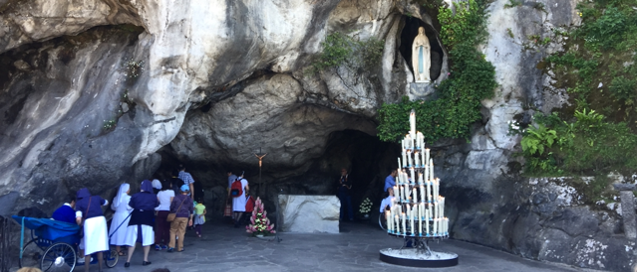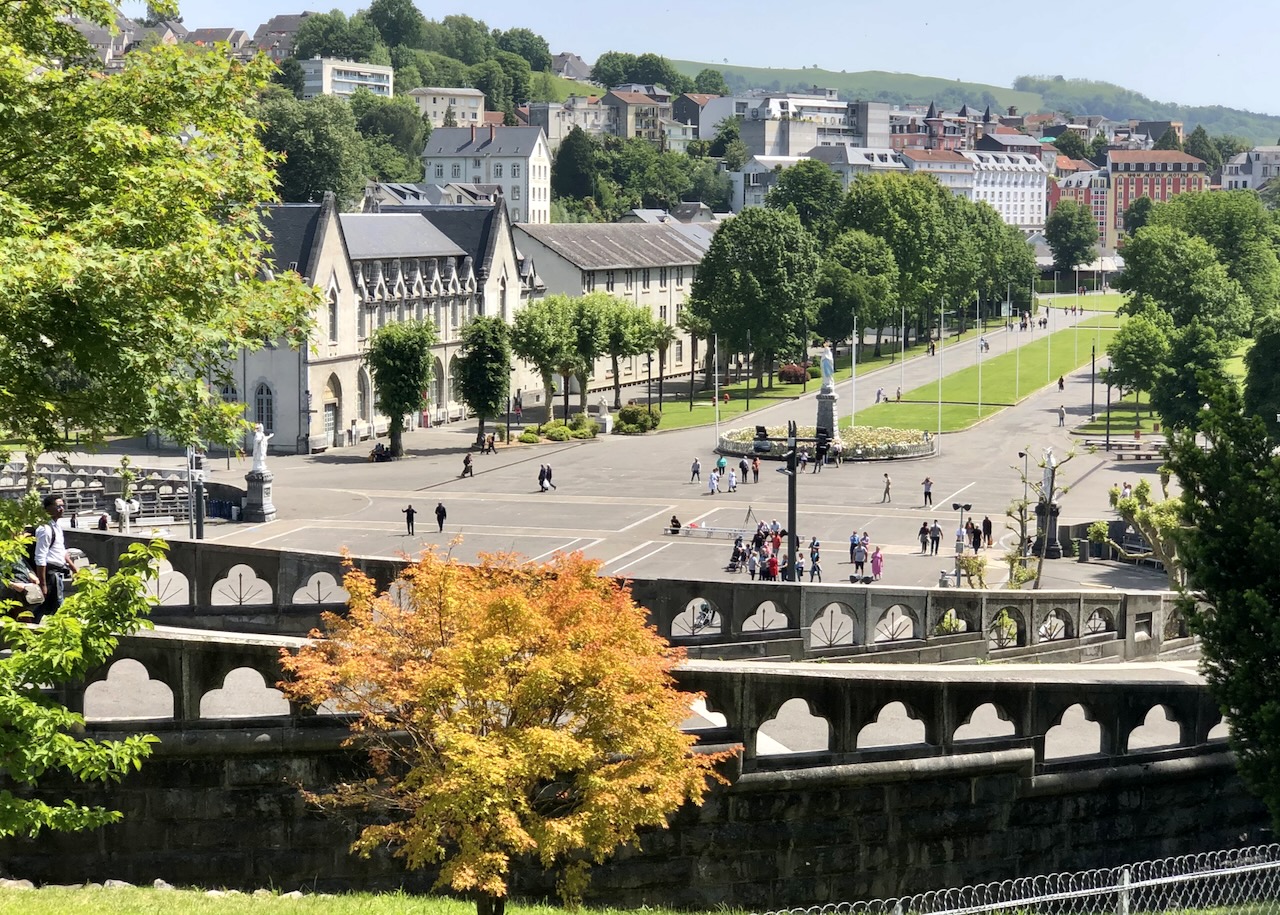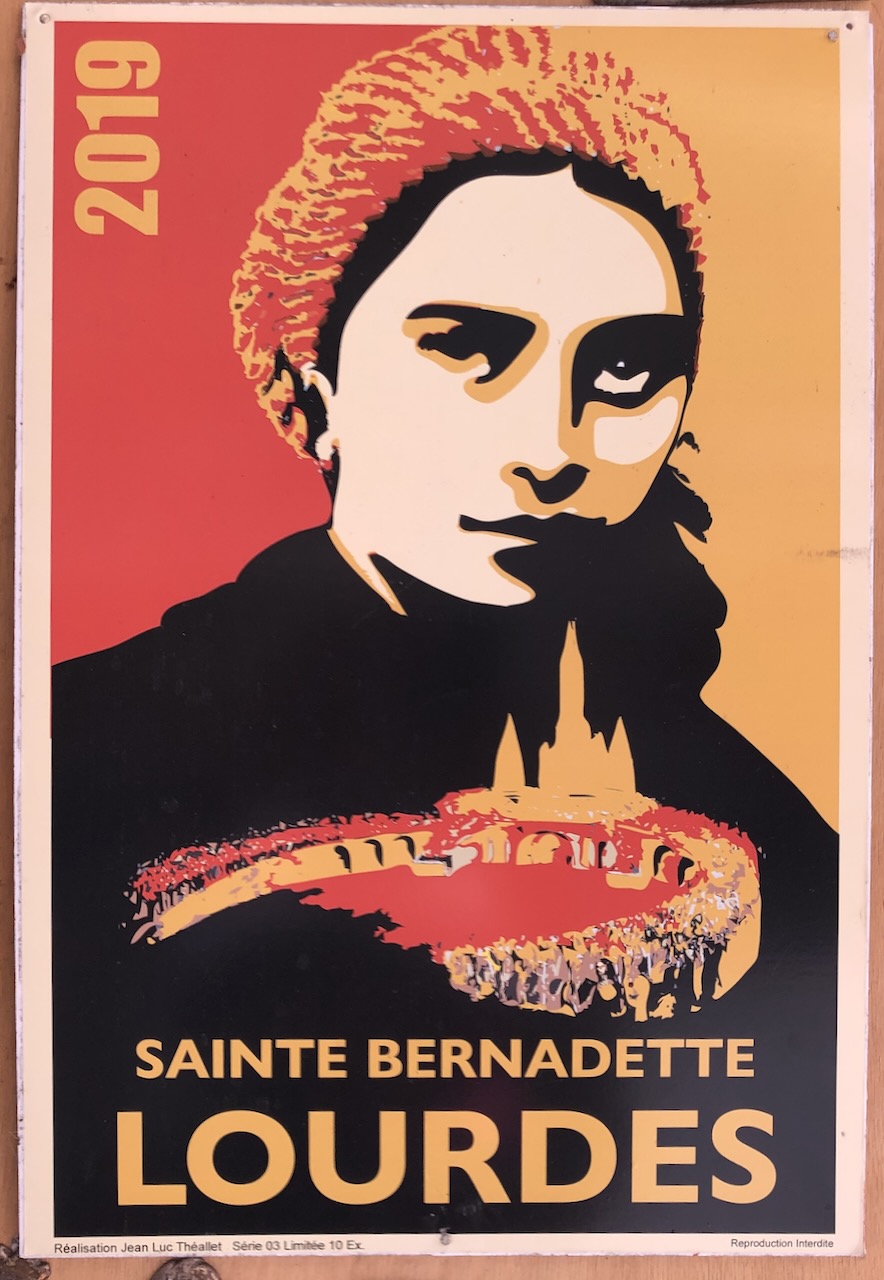Way of St James Tour leader Stu Mcgregor shares his reflections on visiting the town of Lourdes
For 2km there was a line of wheelchair-bound people and their carers winding up through the centre of this tiny town. They would all eventually file off into one of the 270 hotels in this place.
The early afternoon Mass had just finished and nearly 10,000 people were emptying from the giant, underground, 25,000 seat basilica. This was my first impression of the famous town of Lourdes and, reactively I admit, it felt like an assault on my deeply protestant and modernist senses.
In 1858 this was a small town of 4,000 inhabitants eking a meagre agricultural life in the foothills of the Pyrenees. Today it is France’s second most visited location and has the second largest number of hotel beds in the country to host the 5 million people who visit it every year. All this because 150 years ago, a frail and diminutive 14 year old girl from a poor family of ill repute, had a vision.
Well, to be fair, there were 18 visions over a 3 month period. And it wasn’t just any old vision, it was a vision of Mary the mother of Jesus. Lourdes has since developed a reputation for having a spring with healing powers and has become a world renown pilgrimage destination to millions who come to drink from the fountains or bathe in the waters in pursuit of a miracle.

On this, my first visit, I found it to be a town full of contradictions. Hundreds of small shops selling catholic related trinkets and artefacts (often exactly the same ones as everyone else), competing on the narrow streets for custom by claiming a saint’s name to adorn their shop. It’s garish, gaudy and cheap and it seemed to insult everything I understood to be sacred. I’d never seen anything like it and I realised that having been brought up in a protestant enclave, I had absorbed the iconoclastic sensibilities of my reformed forebears — it enraged my faux-piety no end.
Yet in stark contrast, inside the massive sanctuary compound no selling is permitted. There are 22 places for worship, three basilicas and massive open spaces for the large outdoor gatherings.
The river Gave de Pau courses through and divides the compound in half. The main basilicas to the south and the hospitals to the north. The hospitals, in contrast to the commercialism in the town, provide free accommodation to the infirm and are staffed by volunteers. Inside the gate was a world apart from the town outside it.

Lourdes is a fairly recent phenomenon for the pilgrims on the Camino as for the thousand years before 1858, the real miracles were expected 1,000km away at Santiago de Compostela. However, in the last 150 years, as a destination for catholic pilgrimages in its own right, it represents a profound sense of hope on contemporary journeys too. All the same, my modernist post-charismatic skepticism prevailed and I did some sums.
From the estimated 200 million people that have visited since the mid-nineteenth century, the Roman Catholic Church has recognised only 70 miracles. That’s 0.0000345% or 1 in 3 million. My concern is how this shows the strength of power in “crowd mentality” and how we actively resist considering this as hope-less. The progression seems to be that ‘some hope’ easily becomes ‘big hope’—and ‘big hope’ becomes almost dogmatic when coupled with divine inspiration. So I came away asking, “at what point does something cross the threshold to be called ‘false hope’?”

On this day at Lourdes I feel like a small participant in something bigger than me, and it is not something I dismiss just because I can’t comprehend it. In fact, it is precisely my opinion on whether or not this is “false hope” that is simply dismissed by the enormity of the phenomenon unfolding there.
I am an onlooker, observing the exterior of real people and my assumptions about what is changing in the them through this experience are simply that, assumptions, conjecturing and what I think is logical. “The way it is”, is something to which I must reconcile and that’s not always easy.
But there is more to the journey ahead. This marker, this stop, this experience is not for me and, though it was the first time I experienced something like this on the journey, it certainly wasn’t the last.
Sometimes being the transient pilgrim is a gift for letting go of things that we cannot or even needn’t change. All we can and need to do right now, is walk on the path and leave that stuff behind.
And yes, of course, I did drink the water and I did wash my face—you gotta be in to win right?
If this sounds like your kind of adventure, check out our tours below:
